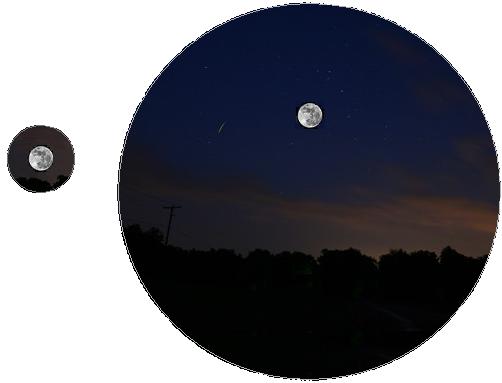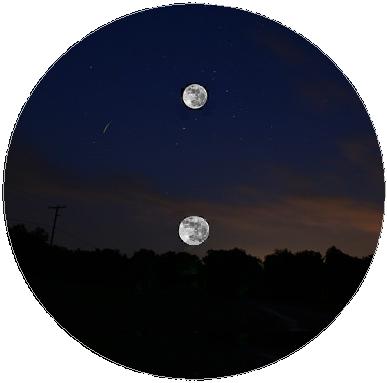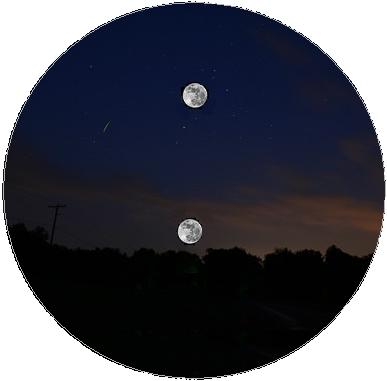
As I promised in the previous articles,
I am going to use the two concepts of mine, the visual field volume and
the converging point, to explain the Moon illusion. If you have arrived
at this web page directly without reading the previous three articles, (1. The Delboeuf, Ponzo and More Illusions; 2. The Ames Room Illusion; 3. Emmert's Law; and Appendix A), I recommend that you read them first. Otherwise, you will have a hard time to fully understand these concepts.
As a matter of fact, after you read these articles you have already had
a pretty good idea of how to explain the Moon illusion because all the
"ingredients" for explaining the Moon illusion are already in there.
What I am going to do in this article is to critique the conventional
theories and try to explain some tough variations of the illusion which
have been eluding the conventional researchers and theorists alike by
using the new concepts of my own.
 twice
as large, but the average estimate is 50% to 75% larger.
twice
as large, but the average estimate is 50% to 75% larger. degree for any position in the sky. The size of the moon's
image on our retinas is nearly constant for all viewing conditions.
degree for any position in the sky. The size of the moon's
image on our retinas is nearly constant for all viewing conditions.